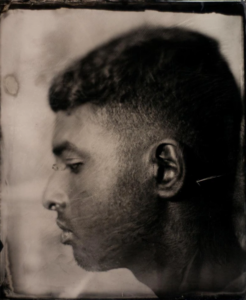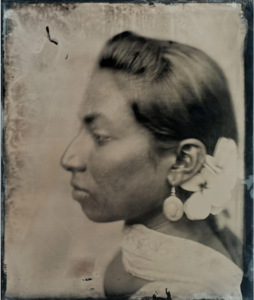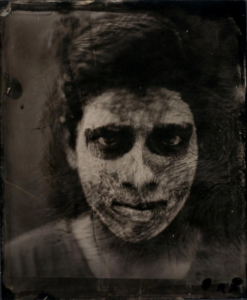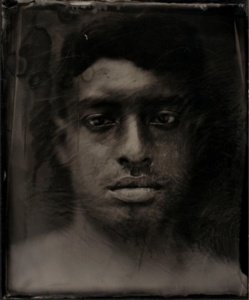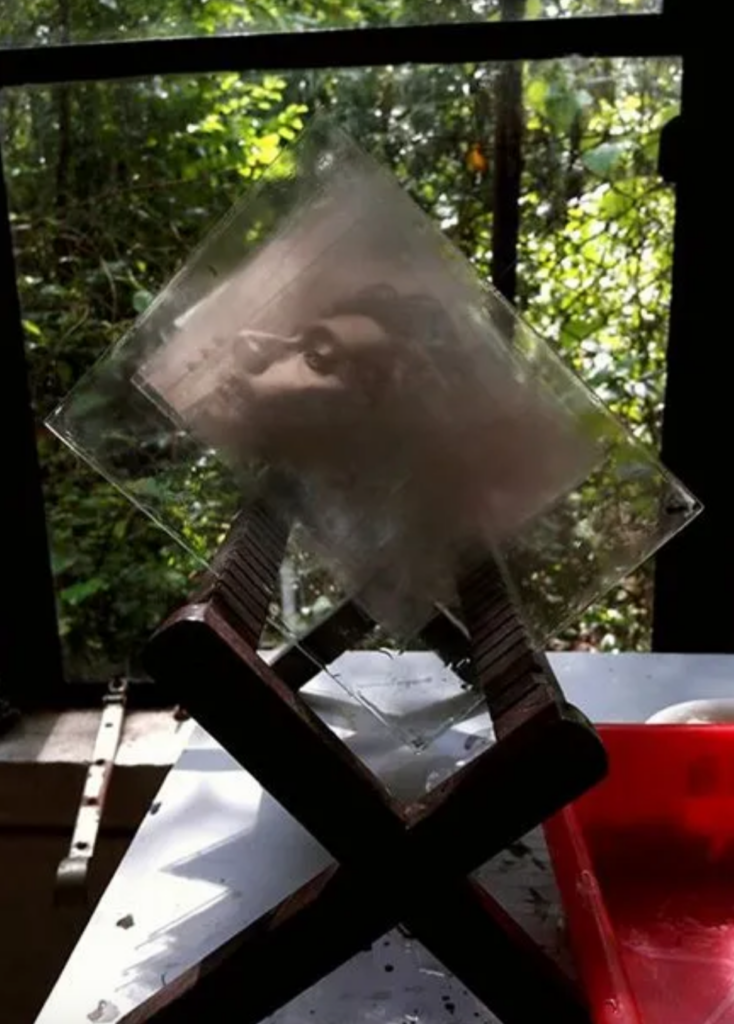
Image from StudioGoppo.org
“One thing people misunderstand about my practice is that they think I revive old photographic processes. But I’m not reviving anything. I use the latest cutting-edge AI technology as well as 19th-century techniques to create images unique to my aesthetic and understanding of the world.” Visual artist Arpan Mukherjee’s practice is based out of Santiniketan, and it reflects the poetic, nostalgic, experimental spirit of Tagore’s haven.
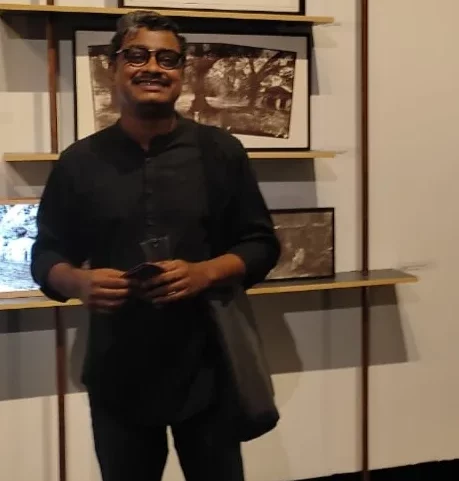
Arpan Mukherjee
Mukherjee has specialised in printmaking and he’s a professor on the subject at VisvaBharati University. This background shows in his photographs, which carry the unmistakable imprint of his hands. By pouring painstaking labour into the creation of these images, he makes them his own. As he describes it, photography is concerned with three factors: speed, accuracy and beauty. With every modern tool at his disposal, Mukherjee’s photographic practice is concerned primarily with that third aspect.
Studio Goppo, led by Arpan Mukherjee and three other artists, is a space dedicated to the study of historical photographic techniques. They hold workshops on alternative photography and teach photographers who grew up on Instagram filters how to create beautiful effects by hand, through such methods as cyanotype, ambrotype and salt prints. Studio Goppo invites artists, as well as historians and researchers to contribute to their archive on early photographic techniques in India.
For our 2018 exhibition, Portraits of a Nation, Sarmaya organised a workshop led by Arpan Mukherjee on albumen printing. We spoke to him recently to understand how this technique disrupted photography in India. According to him, it did a lot more than that—albumen print photography influenced how we perceived ourselves as Indians.
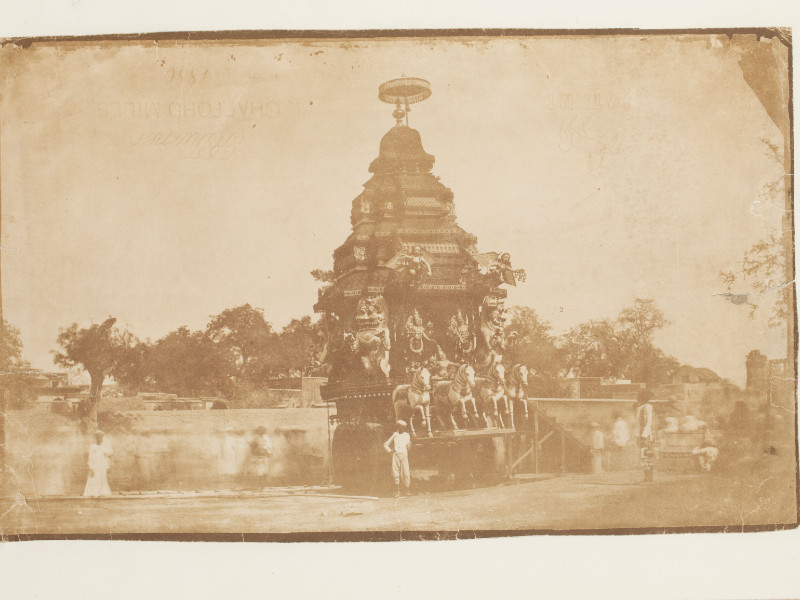
'Temple Chariot, South India', late 19th century, salt print © Sarmaya Arts Foundation (2017.67.39)
Could you set the historical context for the birth of albumen prints in the 19th century?
“The photo industry as we know it today probably began with this innovation. Salt prints came first but the image printed on these papers would sink into the fibres. Albumen print paper was developed to produce sharper details in photos. Over time, many variations became available within the category, like matte albumen, single- and double-coated albumen, glossy albumen etc. Factories came into existence and albumenised paper became one of the first photographic products to be sold widely.”
How was the impact felt in India?
“Any innovation in Britain would find its way to India within 1-2 years. In the late 1800s, many photo shops began to open in Kolkata, which was the capital at the time. In the princely states, court painters lost their jobs to photographers. Royal patrons liked that a photo, unlike a painting, could be replicated and multiple copies circulated among their subjects. However, Indian artists reappropriated the form through painted photography; all painted photography was made on albumen prints.
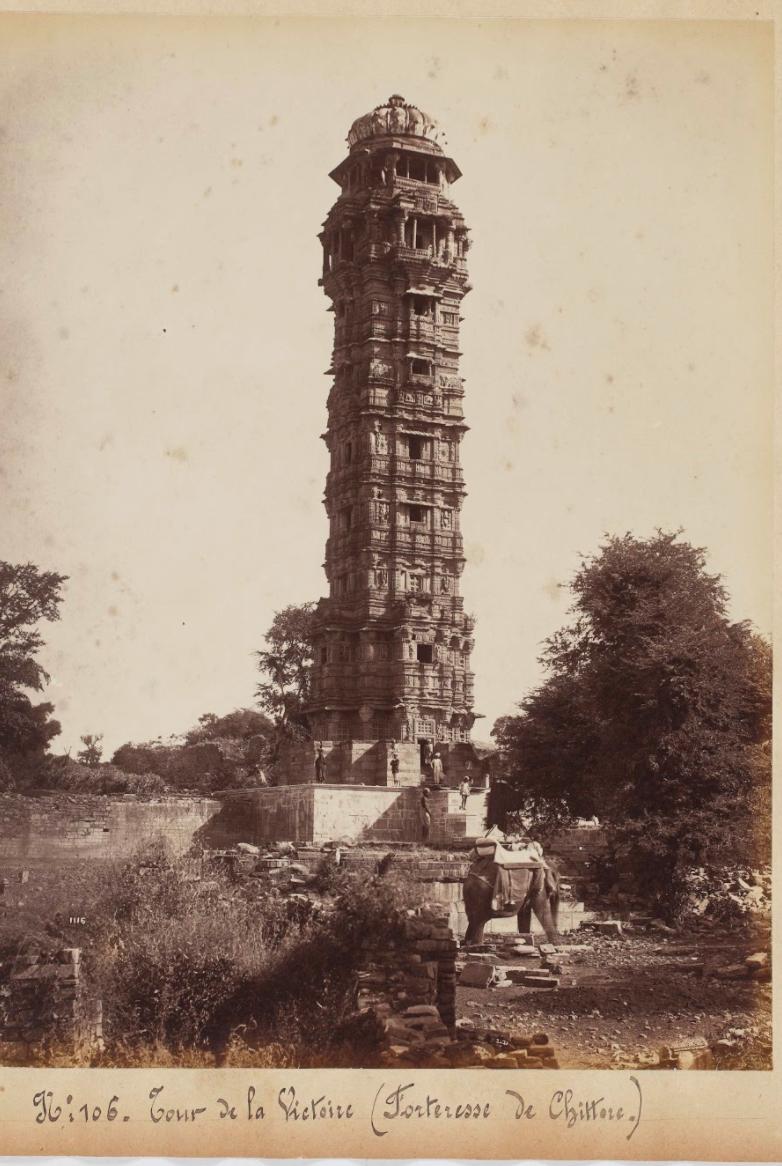
'Tower of Victory, Chittor Fort', c. 1870s, Lala Deen Dayal © Sarmaya Arts Foundation
“Early Indian photographers like Lala Deen Dayal and Ahmad Ali Khan used albumen print paper, which they most likely purchased from the European market. Because of the humidity and heat in India, albumen paper couldn’t be stored for very long or it would develop fungus.
“With the arrival of albumen, there was a decline in other methods of printmaking in India. Another interesting trend was the use of cyanotype at the proofing stage. Photographers would first test wet collodion negatives by printing cyanotype photos, before making albumen prints.”
When did the popularity of albumen print photography decline in India?
“The whole scenario changed after World War I, at the beginning of the 20th Century, when the price of the noble metals rose. Technologies like gelatin print began to replace albumen. As far as I know, the use of albumen print continued till the 1930s in India.”
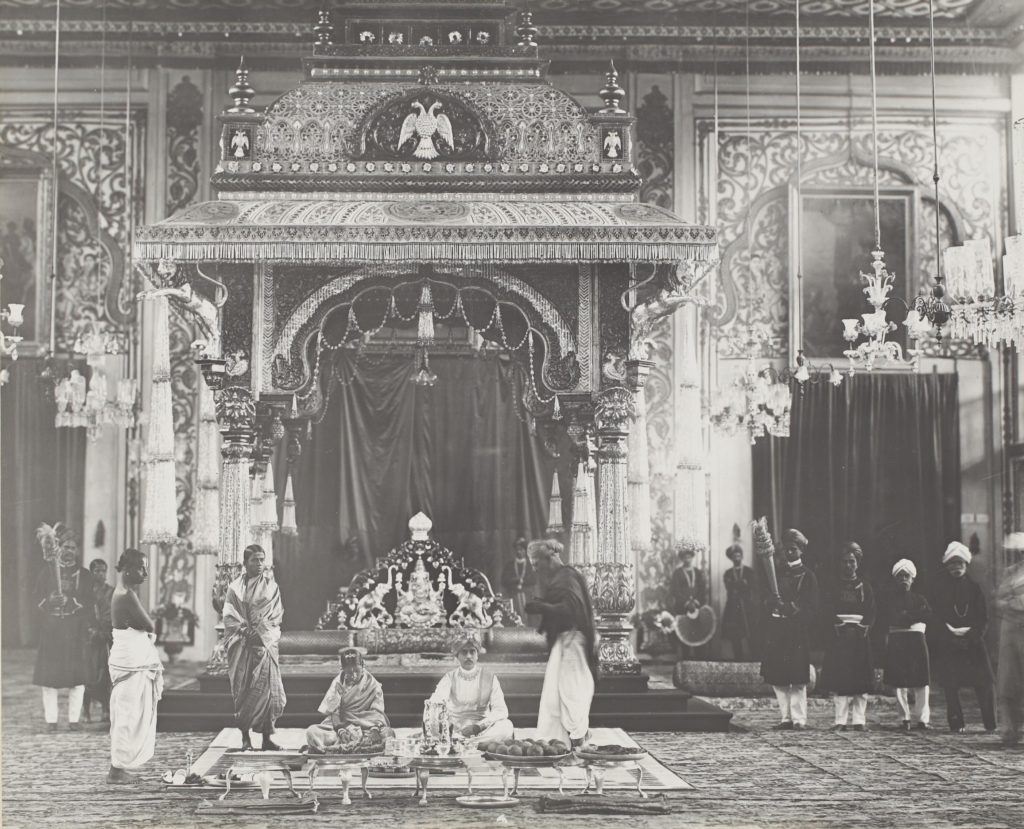
From the wedding album of His Highness Yuvaraja Kanteerava Narasimharaja Wadiyar and Her Highness Yuvarani Kempu Cheluvamma Niyavaru Urs, a silver gelatin print circa 1910, Mysore © Sarmaya Arts Foundation
What function do historical photo techniques serve in your work as a visual artist?
“I live in the era of digitalisation. Unlike 19th-century photographers, accuracy and speed are not concerns for me. But beauty is. It is important for me as an artist to contextualise the aesthetics of my photographs in terms of culture, era and my own practice and environment.
“By using historical photo techniques, I extend the mechanical act of photography into a kind of intentional performance. For eg, when I use the calotype paper negative method, it takes around two-three minutes to click a single image. Asking my model to stay still in front of a camera for that long is like demanding a kind of performance. As a 21st-century practitioner, this is an example of an element I can invite intentionally into my photographs through historical techniques. I use them for a purpose, because I have something to say.
“As someone working in the age of AI, I am tired of automated materials. I’m trying to create something with my own two hands, something unique to my taste and understanding. I believe that goes against the standardisation of automation. And that is what photography needs the most. After all, photography is a kind of mechanical process. It’s bringing in that analogue element that gives an artist satisfaction in his work.”
-
In Arpan Mukherjee’s 2012 series, Fairer People = Beautiful People = Powerful People, the artist revisits the photography technique used in the earliest images made of Indians—albumen print. These 19th-century photographs were part of an ethnographic ‘cataloguing’ of India’s faiths, communities and tribes by the colonial British authorities. Here, the chemistry of the albumen prints reinforced the colonial gaze.
The iodides and bromides of silver used in the wet collodion process were more sensitive to tones of blue, as found in the fair skin of Europeans, than to tints of red and yellow, more common in Indian skin. Thus, all Indians, regardless of great natural variations in complexion, were rendered as uniformly dark in these early photographs. Through the process of making these images, Mukherjee initiated conversations among the young subjects on how early photography helped to establish colonial standards of beauty in our country—where the obsession with fair skin endures even in the 21st century.
What is the statement you’ve made through your use of albumen print?
“I am interested in how we as Indians see ourselves in a post-colonial context. That’s why I work with 19th-century photographic practices. I used albumen print for a project, Fairer People = Beautiful People = Powerful People. It was a series of photographs that recalled a particular time in Indian photographic history. My reference was The Oriental Races And Tribes [ethnographic photo album by William Johnson and William Henderson, published in 1863 and 1866]. All the photos in them were printed on albumen print paper. I used the methodology they were using, I tried to imitate the tonal formula they were using.”
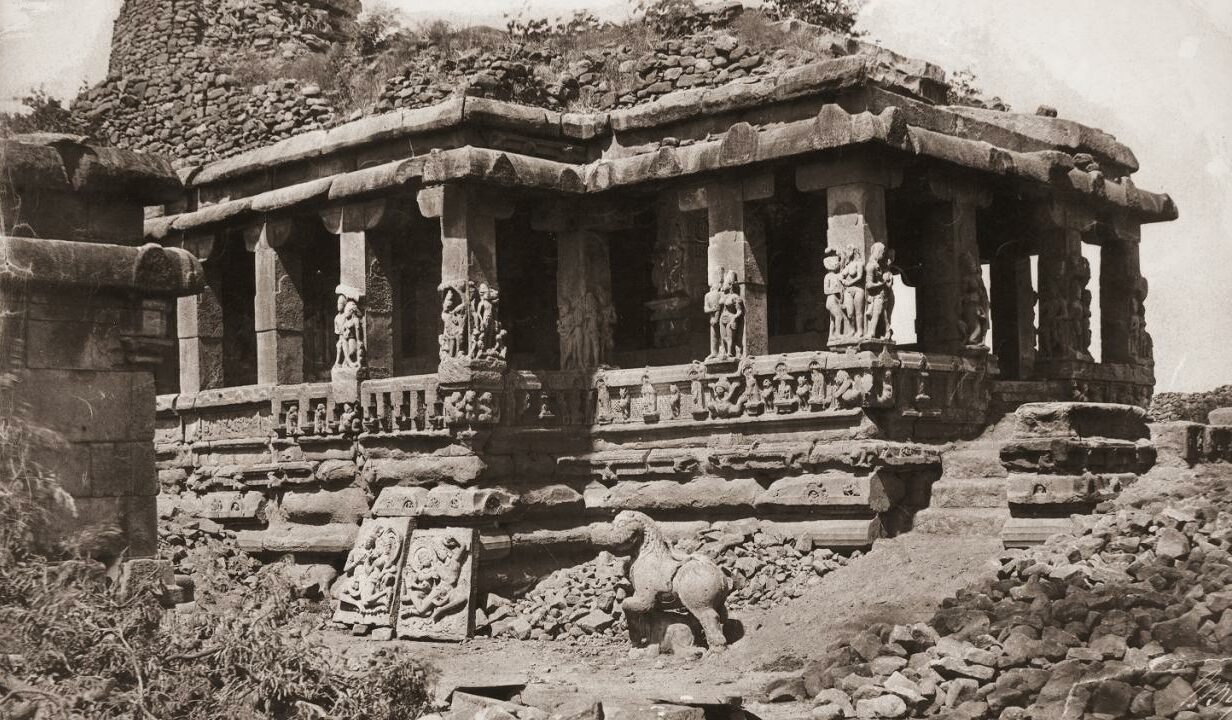
Thomas Biggs, The Durga Temple, Aihole, from the south-east, 1855 © The British Library
Tell us about other Studio Goppo’s other photo projects.
“I recently worked with British Library and CSMVS in Mumbai to recreate 80 albumen print photographs from 150-year-old glass plate negatives. This was for an exhibition of 19th-century photographs of western Indian monuments, heritage and archaeological sites. British Library had all the original glass plate and paper negatives and the exhibition was to be held in Mumbai. Typically in these situations, museums would use the negatives to make digital images and take printouts that imitated albumen prints.
“However, for this project, the Library sent me high-res digital images of the negatives, which I used to create digital negatives of the same size (printed using inkjet on a transparent sheet). Then I recreated all 80 images using the albumen print technique—this is exactly how they would have looked when the photos were first taken 150 years ago.”

